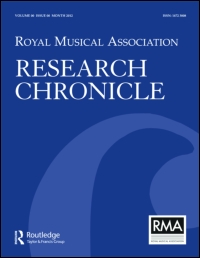Article contents
Jacobean Musicians at Hatfield House, 1605–1613
Published online by Cambridge University Press: 01 January 1974
Extract
Among the Cecil Family and Estate Papers (hereafter referred to as C. F. E. P.) at Hatfield House, are a large number of bills, accounts and letters which help to cast new light not only on the musical life of an important aristocratic family, but also on the activities of a number of musicians already known for their association with other households and with the royal court. The references in the Papers to the years 1605–1613 are gratifyingly extensive. The same cannot be said for the years on either side of this period, a fact which reflects the scarcity of the available records rather than reduced enthusiasm for music and its cultivation. Consequently, this article confines itself to the period 1605–1613 which covers the last years of the life of Robert Cecil (1563–1612). Cecil's position as Secretary of State to Elizabeth I from 1596 and after her death to James I, brought him into regular contact with the royal court; it not only earned him the title of Earl of Salisbury in 1605, but required him to adopt a life style in which musicians were an integral part. Significantly, most of the musicians who appear among the C. F. E. P. were also active at court. Those mentioned in these papers include Thomas Campion, John Coprario, Thomas Dallam, Cormack Dermode, Nicholas Lanier, George Mason and Thomas Warwick.
- Type
- Research Article
- Information
- Copyright
- Copyright © Royal Musical Association, 1974
References
1 I would like to record my gratitude to the Marquess of Salisbury for permission to publish these details and to search through the papers at Hatfield House, and to Mr. R. H. Harcourt Williams, the Librarian and Archivist at Hatfield House, for his willing assistance during my work there and for kindly checking my draft against the original documents.Google Scholar
2 Dermode (?-1618): played the harp in the King's Music from 1603–1618.Google Scholar
3 Mason (c. 1593 – ?): known only as a musician in the Earl of Cumberland's household from 1610. He collaborated with John Earsden in the writing of songs for the entertainment at Brougham Castle in 1617 given by the Earl of Cumberland for James I. Anthony Wood wrote that he graduated Mus. B. from Cambridge in 1601 and J. E. West stated that he was the organist of Trinity College, Cambridge from 1612–1629, but both of these claims are untenable in the light of the evidence among the C. F. E. P. Even before this evidence was available, Ian Spink disputed these claims in his article ‘Campion's Entertainment at Brougham Castle, 1617’ in Music in English Renaissance Drama, ed. by John H. Long, (Lexington, 1968), p. 59.Google Scholar
4 Warwick (? – ?): succeeded Orlando Gibbons as organist of the Chapel Royal in 1625; active in the King's Music from 1625–1642 as a virginalist.Google Scholar
1 Cecil Papers, 111. 100. cf. Historical Manuscripts Commission, Calendar of the Manuscripts of the Most Honourable the Marquess of Salisbury Preserved at Hatfield House, Hertfordshire, Part XVII (London, 1938), p. 297.Google Scholar
2 Cecil Papers, 228. 33. cf. Historical Manuscripts Commission, ibid., Part XXI (London, 1970), p. 212.Google Scholar
3 Cecil Papers, 228. 32. cf. Historical Manuscripts Commission, ibid., Part XXI (London, 1970), p. 215.Google Scholar
4 Edney (? – ?): a flautist in the King's Music from c. 1597–1607.Google Scholar
5 Oxford (? – ?): nothing is known beyond what appears in the C. F. E. P.Google Scholar
1 Innocent Lanier (? –1625): a flautist in the royal music from 1592–1625; brother of John Lanier.Google Scholar
1 Christian the Dane (? – ?): alias Christian Cruss; only known by his appearance among the C. F. E. P.Google Scholar
1 John Lanier (? –1616): performed among the sackbuts and hautboys at the royal court from 1582–1616; father of Nicholas Lanier.Google Scholar
1 Simon the singing boy: no surname is given in the C. F. E. P., but might this not be Simon Ives (1600–1662)?Google Scholar
- 3
- Cited by




